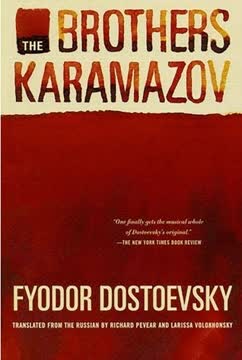Key Takeaways
1. Master the art of deception to achieve victory without fighting
To win one hundred battles is not the highest good. The highest good is to have the enemy soldiers submit without fighting.
Deception is key. The most effective military strategy aims to subdue the enemy without engaging in direct combat. This approach minimizes casualties and preserves resources. Successful deception involves:
- Creating illusions of strength or weakness
- Spreading misinformation to confuse the enemy
- Concealing true intentions and capabilities
By mastering these techniques, a skilled strategist can manipulate the enemy's perceptions and decision-making, leading to surrender or retreat without bloodshed.
2. Exploit your enemy's weaknesses and internal conflicts
If you know the enemy and know yourself, you may fight a hundred battles without danger.
Knowledge is power. Understanding both your own strengths and weaknesses, as well as those of your enemy, is crucial for success. To exploit enemy weaknesses:
- Gather intelligence through spies and reconnaissance
- Identify and exacerbate internal divisions within the enemy camp
- Target vulnerable points in the enemy's strategy or defenses
By focusing on these vulnerabilities, a smaller or weaker force can overcome a seemingly superior opponent.
3. Adapt your strategy to changing circumstances
As water shapes itself to the vessel that contains it, so in war the skillful general should shape his plans according to the situation.
Flexibility is crucial. Military situations are dynamic and unpredictable. Successful strategists must be able to:
- Quickly assess changing conditions on the battlefield
- Adjust tactics and plans in real-time
- Abandon ineffective strategies without hesitation
Rigidly adhering to a predetermined plan often leads to defeat. Instead, cultivate the ability to adapt and improvise based on the evolving situation.
4. Use psychological warfare to manipulate your opponent
All warfare is based on deception.
Mind games matter. Psychological tactics can be as effective as physical ones in undermining an enemy's resolve. Key psychological warfare techniques include:
- Spreading rumors and misinformation
- Creating illusions of strength or weakness
- Exploiting the enemy's fears and insecurities
By manipulating the enemy's perceptions and emotions, a skilled strategist can influence their decisions and actions, often leading to victory without direct confrontation.
5. Preserve your strength through strategic retreat
If you know you are inferior, withdraw; if you have no chance of winning, do not fight.
Know when to retreat. Contrary to popular belief, retreat is not always a sign of weakness. Strategic withdrawal can be a powerful tool when:
- Facing a superior enemy force
- Preserving resources for future battles
- Luring the enemy into unfavorable positions
A well-executed retreat allows you to regroup, conserve strength, and choose more favorable conditions for future engagements.
6. Create alliances and isolate your enemies
The enemy of my enemy is my friend.
Diplomacy matters. Building alliances and isolating enemies can significantly alter the balance of power. Effective diplomatic strategies include:
- Forming coalitions with shared interests
- Exploiting divisions among enemy factions
- Offering incentives for neutrality or support
By creating a network of allies and isolating opponents, a strategist can gain significant advantages without directly engaging in battle.
7. Turn disadvantages into advantages through clever tactics
In the midst of chaos, there is also opportunity.
Creativity conquers. Skilled strategists can turn seemingly unfavorable situations to their advantage. This involves:
- Identifying hidden opportunities in challenging circumstances
- Using unconventional tactics to surprise the enemy
- Transforming weaknesses into strengths
By thinking creatively and embracing unconventional approaches, a leader can overcome apparent disadvantages and achieve unexpected victories.
8. Employ indirect approaches to overcome superior forces
The supreme art of war is to subdue the enemy without fighting.
Indirection succeeds. When facing a stronger opponent, indirect strategies are often more effective than direct confrontation. Indirect approaches include:
- Attacking the enemy's supply lines or resources
- Undermining their alliances and support
- Employing guerrilla tactics to wear down the enemy
These methods allow a weaker force to gradually erode the enemy's strength and will to fight, ultimately leading to victory without a decisive battle.
9. Maintain flexibility and avoid rigid thinking in strategy
Be extremely subtle, even to the point of formlessness. Be extremely mysterious, even to the point of soundlessness. Thereby you can be the director of the opponent's fate.
Adaptability wins. Rigid thinking and inflexible plans are often recipes for disaster in warfare. To maintain strategic flexibility:
- Cultivate a mindset of constant adaptation
- Avoid becoming overly attached to any single strategy
- Encourage creative problem-solving among subordinates
By remaining flexible and open to new approaches, a strategist can effectively respond to changing circumstances and outmaneuver opponents who are stuck in rigid patterns of thinking.
Last updated:
FAQ
What's "The 36 Strategies of the Martial Arts" about?
- Classical Chinese maxims: The book is a collection of ancient Chinese strategies for understanding, engaging, and defeating opponents in various contexts, including war, business, and life.
- Unknown origins: The strategies are a synthesis of military maxims, political expressions, and folk sayings, some dating back 1,500 years.
- Explanations and examples: Professor Hiroshi Moriya provides clear explanations and examples from Chinese history, European events, and modern business.
- Translator's contribution: William Scott Wilson, a renowned translator, has translated and provided a foreword for the book, making it accessible to English readers.
Why should I read "The 36 Strategies of the Martial Arts"?
- Timeless wisdom: The strategies offer timeless insights into human behavior and conflict resolution, applicable in various fields.
- Broad applicability: Whether you're interested in martial arts, business, sports, or politics, the strategies provide valuable lessons.
- Cultural insight: The book offers a deep dive into Chinese philosophy and military thought, enriching your understanding of Eastern strategies.
- Practical examples: The book includes practical examples from history and modern times, illustrating how these strategies can be applied today.
What are the key takeaways of "The 36 Strategies of the Martial Arts"?
- Flexibility and adaptability: The strategies emphasize the importance of being adaptable and avoiding rigidity in conflict situations.
- Psychological warfare: Many strategies focus on psychological tactics, such as deception and manipulation, to gain an advantage.
- Strategic patience: The book highlights the value of patience and waiting for the right moment to strike.
- Understanding opponents: A deep understanding of one's opponent is crucial for successful strategy implementation.
How does "The 36 Strategies of the Martial Arts" relate to modern business?
- Competitive advantage: The strategies can be applied to gain a competitive edge in business by understanding and outmaneuvering competitors.
- Negotiation tactics: Many strategies offer insights into effective negotiation and persuasion techniques.
- Crisis management: The book provides strategies for handling crises and turning challenges into opportunities.
- Leadership lessons: The strategies offer valuable lessons for leaders on how to inspire and manage teams effectively.
What are some examples of strategies from "The 36 Strategies of the Martial Arts"?
- "Obscure Heaven, Cross the Sea": This strategy involves creating a distraction to hide one's true intentions.
- "Borrow a Sword to Make Your Kill": It suggests using a third party to achieve your goals without direct involvement.
- "Await His Tired Steps at Your Leisure": This strategy advises waiting for the opponent to tire before making a move.
- "The Strategy of the Empty Fortress": It involves creating an illusion of strength when one is actually weak.
What is the significance of the "Strategy of the Beautiful Woman"?
- Distraction and seduction: This strategy uses beauty to distract and weaken an opponent's resolve.
- Historical examples: The book provides historical instances where this strategy was used to great effect.
- Psychological manipulation: It highlights the power of psychological manipulation in achieving strategic goals.
- Broader applications: While originally about using women, the strategy can be metaphorically applied to any enticing distraction.
How does "The 36 Strategies of the Martial Arts" emphasize the importance of deception?
- Core principle: Deception is a recurring theme, seen as a fundamental aspect of successful strategy.
- Various forms: The book explores different forms of deception, from feigned retreats to false alliances.
- Psychological impact: Deception aims to confuse and demoralize opponents, giving the strategist an upper hand.
- Historical validation: Many strategies are backed by historical examples where deception led to victory.
What role does patience play in "The 36 Strategies of the Martial Arts"?
- Strategic waiting: Patience is crucial for waiting for the right moment to act, as seen in strategies like "Await His Tired Steps at Your Leisure."
- Avoiding rash actions: The book advises against impulsive actions that could lead to failure.
- Building strength: Patience allows for the accumulation of resources and strength before engaging the opponent.
- Timing and opportunity: Recognizing the right timing is emphasized as a key to successful strategy execution.
How does "The 36 Strategies of the Martial Arts" address the concept of retreat?
- Strategic withdrawal: Retreat is seen as a valid strategy when facing overwhelming odds, as in "Retreat Is Considered the Best."
- Preserving strength: The book emphasizes the importance of preserving one's forces for future opportunities.
- Avoiding unnecessary losses: Retreat is advised to avoid futile battles and unnecessary casualties.
- Long-term perspective: The strategy of retreat is about maintaining a long-term perspective and preparing for future success.
What are the best quotes from "The 36 Strategies of the Martial Arts" and what do they mean?
- "Winning without fighting": This quote encapsulates the ideal of achieving victory through strategy rather than direct confrontation.
- "The martial [art] is based on deception": It highlights the central role of deception in martial strategy.
- "If you have no chance of winning, do not fight": This emphasizes the importance of choosing battles wisely.
- "To win one hundred battles is not the highest good": It suggests that true success lies in achieving goals without conflict.
How does "The 36 Strategies of the Martial Arts" compare to Sun Tzu's "The Art of War"?
- Complementary texts: Both books focus on strategy and tactics, with "The 36 Strategies" offering more specific maxims.
- Psychological focus: While "The Art of War" provides broader strategic principles, "The 36 Strategies" delves deeper into psychological tactics.
- Historical context: "The 36 Strategies" includes more historical examples and applications in various contexts.
- Practical applications: Both books offer practical insights, but "The 36 Strategies" provides more detailed scenarios and examples.
What is the historical significance of "The 36 Strategies of the Martial Arts"?
- Ancient wisdom: The strategies reflect ancient Chinese military and philosophical thought, offering insights into historical conflicts.
- Cultural influence: The book has influenced Chinese culture and strategy for centuries, shaping military and political tactics.
- Enduring relevance: Despite its ancient origins, the strategies remain relevant in modern contexts, from business to personal development.
- Synthesis of knowledge: The book represents a synthesis of various sources, including military maxims, political expressions, and folk sayings.
Review Summary
The 36 strategies of the martial arts receives mostly positive reviews, with readers praising its insights into Chinese military tactics and their applications to modern life. Many find the book informative and thought-provoking, appreciating its historical examples and practical wisdom. Some readers recommend multiple readings to fully grasp the concepts. Critics note a lack of contemporary examples and question the ethics of some strategies. Overall, reviewers value the book for its strategic thinking and cultural insights, despite occasional translation issues or preferences for more comprehensive texts.
Similar Books
Download PDF
Download EPUB
.epub digital book format is ideal for reading ebooks on phones, tablets, and e-readers.














